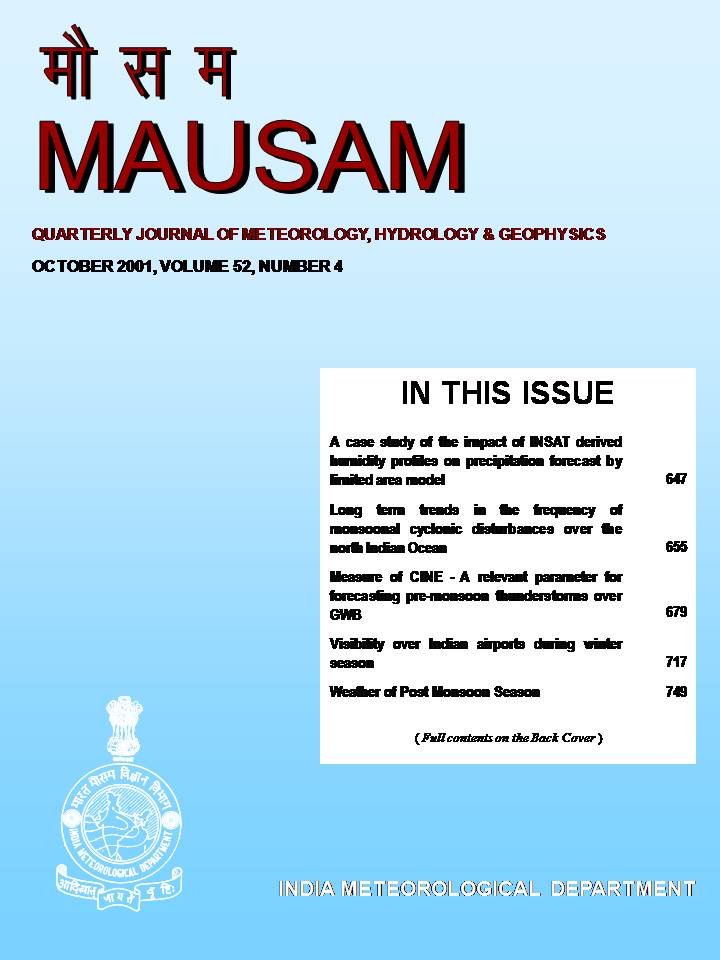Contribution of water and radiation to growth and yield of pearl millet in Deccan plateau - A case study
DOI:
https://doi.org/10.54302/mausam.v52i4.1741Abstract
In this study the agrometeorological data for the period from 1991 to 1997 have been used to study evapotranspiration demand and crop characteristics of pearl millet at Solapur. Crop coefficients, water use efficiency and radiation use efficiency have been worked out and discussed. This has been done for two varieties of the crop viz., ICTP-8203 and Shraddha. The study revealed that pearl millet crop consumed maximum amount of water during earhead emergence phase, followed by flowering phase. During earhead emergence and flowering phase together, ICTP-8203 variety used nearly 50% of total water used while shraddha consumed about 60%. The highest values of crop coefficient are seen during earhead emergence phase for both the varieties. Maximum photosynthetically active radiation is availed by the crop during its vegetative phase. Radiation use efficiency is more for ICTP-8203 variety than Shraddha variety.
Downloads
Published
How to Cite
Issue
Section
License
Copyright (c) 2021 MAUSAM

This work is licensed under a Creative Commons Attribution-NonCommercial 4.0 International License.
All articles published by MAUSAM are licensed under the Creative Commons Attribution 4.0 International License. This permits anyone.
Anyone is free:
- To Share - to copy, distribute and transmit the work
- To Remix - to adapt the work.
Under the following conditions:
- Share - copy and redistribute the material in any medium or format
- Adapt - remix, transform, and build upon the material for any purpose, even
commercially.



